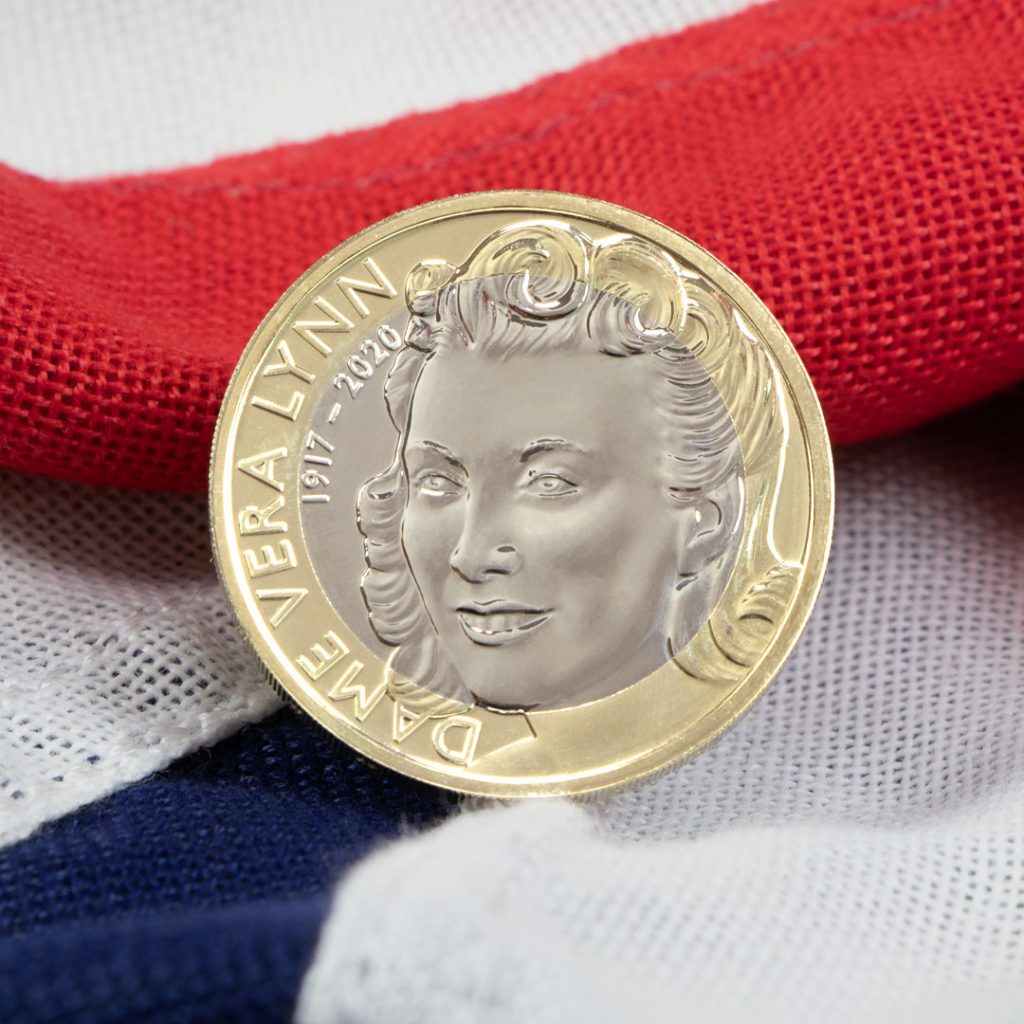Posts Tagged ‘Coins’
25 Years of the Bi-Metallic £2! Vote for your favourite design…
After a review of the United Kingdom coinage in 1994, it emerged that there was a requirement for a £2 coin to enter general circulation.
After extensive consultation, it was decided this would be a bi-colour coin, making it easily distinguishable from the other coins in circulation.
Originally, the intention was to issue the £2 coin in November 1997. However, concerns emerged from the vending industry over their size. The £2 coin was eventually launched on 15 June 1998, with millions of the coin released into circulation.
Since then we’ve seen over 35 different designs enter circulation!
And in 2022, the bi-metallic £2 coin celebrates its 25th birthday!
£2 coin vote – winning design revealed!
We asked you to vote for your favourite bi-metallic £2 coin design and the results are in!

Our winning coin design is the Great Fire of London £2, taking an impressive 17% of all votes! This coin was issued in 2016 to mark the 350th anniversary of one of the most well-known disasters to hit London.
However, three years after this coin was issued into circulation, it was revealed that its mintage figure was mistakenly listed and the coin is in fact rarer than once thought…
The previous figure of 5,135,000 meant this coin was fairly common but the updated figure of 1,625,000, makes this coin one of the rarest £2 coins in circulation!
Did your favourite coin design make the top 5? Let us know in the comments below!
Never miss a UK coin issue!
The UK’s First Pride 50p!
The 50th Anniversary of London Pride was celebrated in July 2022 and to mark the event, a UK 50p coin was issued – the UK’s FIRST Pride 50p!
* Update – Entering circulation! *
On 25th October 2022, 5 million Pride 50ps entered circulation via 2,000 different Post Offices across the UK. Following the death of Queen Elizabeth II, The Royal Mint also confirmed that the Pride 50p would be the last UK coin to enter circulation featuring Her Majesty’s portrait on the obverse.
The 2022 UK Pride 50p Coin
The UK’s first Pride 50p was issued in collaboration with Pride in London and features an original design by artist, writer and LGBTQ+ activist, Dominique Holmes.
The reverse of the coin features 5 rainbows, each accompanied with part of the inscription, “PRIDE PROTEST VISIBILITY UNITY EQUALITY”.
This will be the last UK coin to enter circulation featuring Queen Elizabeth II’s portrait on the obverse.
The 2022 Pride 50p is no longer available from The Royal Mint, but you can still secure it in Brilliant Uncirculated quality from Change Checker for just £12.99 (+p&p) >>
This was the first UK 50p coin issued representing Pride. Previous ‘UK first’ 50p coins have been incredibly popular.
The UK’s First Beatrix Potter 50p Collection
This 50p coin collection was issued in 2016 to celebrate the much loved author, Beatrix Potter. The collection features four coins each representing a character from Potter’s iconic tales and one honouring Beatrix Potter herself.
The Colour Silver Proof Peter Rabbit 50p coin was so popular that it sold out in a matter of hours and caused The Royal Mint’s website to crash!

The UK’s First Snowman 50p

In 2018, The Royal Mint released the first ever commemorative UK Christmas 50p coin, issued to mark the 40th anniversary of the publication of Raymond Briggs’ much-loved festive tale, The Snowman™.
Designed by Natasha Ratcliffe, the coin depicts the boy and the snowman flying through the night sky above Brighton Pier. This coin didn’t enter circulation, but the Silver Proof version sold out within 24 hours of release.
50 Years of Pride
The first London Pride event took place in 1972 and was attended by approximately 2,000 people, the event has grown tremendously since, with over 1.5 million people attending the 2019 London Pride parade.

Credit: Camerawalker, CC BY-SA 4.0, via Wikimedia Commons
Pride events take place annually across the globe, however most were cancelled in 2020 and 2021 due to the coronavirus pandemic. Returning in 2022, Pride events took place across the UK.
Secure the 2022 UK Pride 50p for your collection!
The Royal Mint will make a contribution of £40,000 to London LGBT Community Pride C.I.C in connection with this campaign.
Your Pride 50p coin has been struck to a superior Brilliant Uncirculated finish and will be protectively encapsulated in official Change Checker packaging, ready to preserve for generations to come.
‘Forces Sweetheart’, Dame Vera Lynn, commemorated on UK £2 coin
In 2020, we received the sad news that Dame Vera Lynn had sadly passed away. The iconic wartime singer was famous for boosting the morale of British troops during WWII.
Coined as the ‘forces sweetheart’, her renditions of We’ll Meet Again, the White Cliffs of Dover and I’ll be Seeing You, became synonyms with wartime.
Dame Vera Lynn played such a key role during wartime that Buckingham Palace sent a private message of condolence to her family.
And in 2022, to commemorate her life and achievements, The Royal Mint commemorated her on a UK £2 coin.

Designed by The Royal Mint, this £2 features a detailed portrait of Vera Lynn as she appeared during the height of her fame.
The popularity of her songs carried across generations. In 2020, when many of us were forced apart from one another, her famous song ‘We’ll Meet Again’ spoke to the nation once more, with a similar level of emotion as they did in 1940 – a testament to her charm, skill, and beautiful voice.
To learn more about other UK coins which have been issued to commemorate wartime, continue reading…
2020 Victory in Europe £2

2020 marked 75 years since Victory in Europe Day, commonly known as VE Day.
This monumental day signified the end of the Second World War in Europe and brought long-awaited peace following Nazi Germany’s unconditional surrender of armed forces on the 8th May 1945.
To commemorate this pivotal moment and one of the most historically significant days in British history, a UK £2 coin was issued.
Dominique Evans‘ design features a woman holding a newspaper aloft in crowd of celebrating people, set against a backdrop of the word VICTORY.
The edge inscription reads ‘JUST TRIUMPH AND PROUD SORROW’ which is incredibly fitting for a coin which marks such a historic anniversary.
2019 D-Day £2
In 2019, The Royal Mint issued a £2 coin commemorating the 75th Anniversary of D-Day, the largest seaborne invasion in history.
The invasion took place on the 6th June 1944 and began the liberation of German occupied France and laid the foundations for the Allied Victory.
Initially issued as part of the 2019 Annual Coin Set, the D-Day £2 is favoured among collectors for its innovative design by Stephen Taylor.
The reverse features arrows pointing across the English Channel to Normandy; each arrow has one of the five code-names for the beaches where Allied Troops landed: Utah, Omaha, Gold, Juno and Sword.
2005 St. Paul’s Cathedral £2
In 2005, The Royal Mint issued a second £2 in the new bi-metallic specifications to commemorate 60 years since the end of the war.
On 8th May 1945, Winston Churchill announced VE Day – Victory in Europe, which marked the end of World War Two.
Interestingly, the reverse design depicts St. Paul’s Cathedral. This is because the cathedral was one of only a few structures which survived the Blitz to become a great symbol of hope to a war-torn nation.
The edge inscription reads ‘IN VICTORY: MAGNANIMITY, IN PEACE: GOODWILL’ which is part of the famous maxim that prefaces Churchill’s history of the Second World War.
10,191,000 entered circulation. Have you found one in your change? Comment below!
Secure the 2022 UK Dame Vera Lynn £2 in the 2022 Annual Set
The Dame Vera Lynn £2 is no longer available, but you can still secure it as part of the 2022 Annual Coin Set >>








